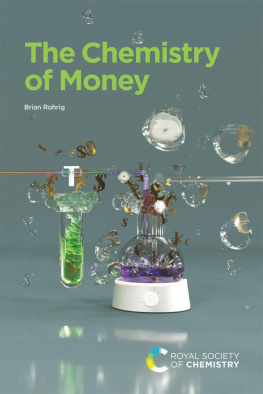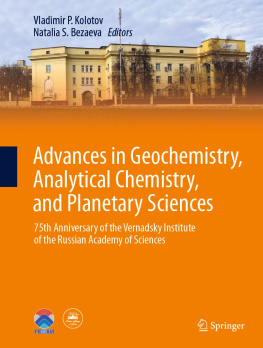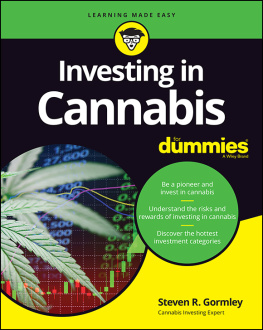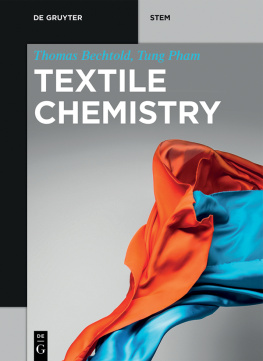Thomas Brian F - The Analytical Chemistry of Cannabis
Here you can read online Thomas Brian F - The Analytical Chemistry of Cannabis full text of the book (entire story) in english for free. Download pdf and epub, get meaning, cover and reviews about this ebook. year: 2016, publisher: Elsevier Science, genre: Home and family. Description of the work, (preface) as well as reviews are available. Best literature library LitArk.com created for fans of good reading and offers a wide selection of genres:
Romance novel
Science fiction
Adventure
Detective
Science
History
Home and family
Prose
Art
Politics
Computer
Non-fiction
Religion
Business
Children
Humor
Choose a favorite category and find really read worthwhile books. Enjoy immersion in the world of imagination, feel the emotions of the characters or learn something new for yourself, make an fascinating discovery.

- Book:The Analytical Chemistry of Cannabis
- Author:
- Publisher:Elsevier Science
- Genre:
- Year:2016
- Rating:3 / 5
- Favourites:Add to favourites
- Your mark:
- 60
- 1
- 2
- 3
- 4
- 5
The Analytical Chemistry of Cannabis: summary, description and annotation
We offer to read an annotation, description, summary or preface (depends on what the author of the book "The Analytical Chemistry of Cannabis" wrote himself). If you haven't found the necessary information about the book — write in the comments, we will try to find it.
The Analytical Chemistry of Cannabis — read online for free the complete book (whole text) full work
Below is the text of the book, divided by pages. System saving the place of the last page read, allows you to conveniently read the book "The Analytical Chemistry of Cannabis" online for free, without having to search again every time where you left off. Put a bookmark, and you can go to the page where you finished reading at any time.
Font size:
Interval:
Bookmark:
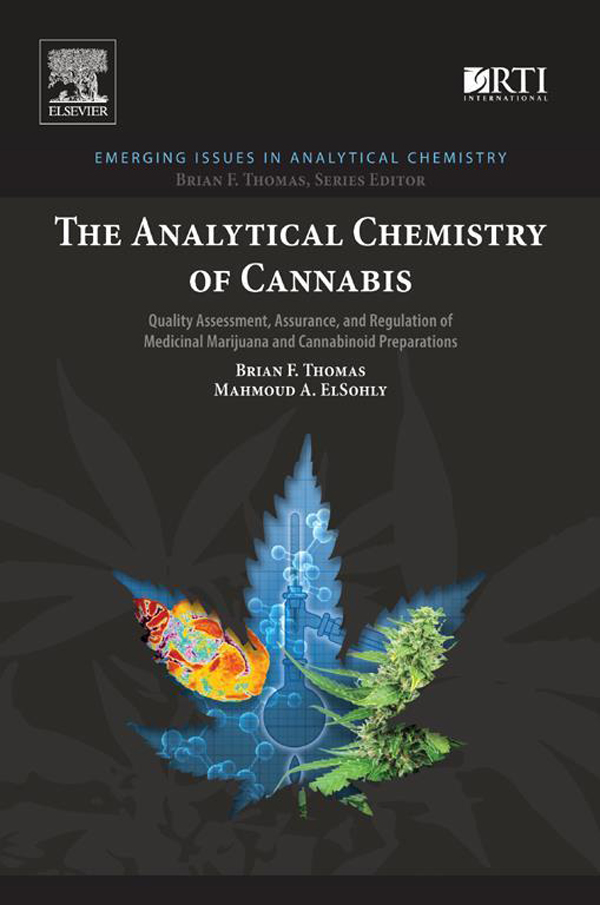
- Tables in Chapter 1
- Figures in Chapter 1
- Figures in Chapter 2
- Figures in Chapter 3
- Figures in Chapter 4
- Figures in Chapter 5
- Figures in Chapter 6
Series Editor
Brian F. Thomas
Analytical Chemistry and Pharmaceutics, RTI International, Research Triangle Park, NC, United States
Mahmoud A. ElSohly
National Center for Natural Products Research, Research Institute of Pharmaceutical Sciences and Department of Pharmaceutics, School of Pharmacy, University of Mississippi, MS, United States
Emerging Issues in Analytical Chemistry

Elsevier
Radarweg 29, PO Box 211, 1000 AE Amsterdam, Netherlands
The Boulevard, Langford Lane, Kidlington, Oxford OX5 1GB, UK
225 Wyman Street, Waltham, MA 02451, USA
Copyright 2016 Elsevier Inc. All rights reserved.
Published in cooperation with RTI Press at RTI International, an independent, nonprofit research institute that provides research, development, and technical services to government and commercial clients worldwide (www.rti.org). RTI Press is RTIs open-access, peer-reviewed publishing channel. RTI International is a trade name of Research Triangle Institute.
No part of this publication may be reproduced or transmitted in any form or by any means, electronic or mechanical, including photocopying, recording, or any information storage and retrieval system, without permission in writing from the publisher. Details on how to seek permission, further information about the Publishers permissions policies and our arrangements with organizations such as the Copyright Clearance Center and the Copyright Licensing Agency, can be found at our website: www.elsevier.com/permissions
This book and the individual contributions contained in it are protected under copyright by the Publisher (other than as may be noted herein).
Notices
Knowledge and best practice in this field are constantly changing. As new research and experience broaden our understanding, changes in research methods or professional practices, may become necessary.
Practitioners and researchers must always rely on their own experience and knowledge in evaluating and using any information or methods described herein. In using such information or methods they should be mindful of their own safety and the safety of others, including parties for whom they have a professional responsibility.
To the fullest extent of the law, neither the Publisher nor the authors, contributors, or editors, assume any liability for any injury and/or damage to persons or property as a matter of products liability, negligence or otherwise, or from any use or operation of any methods, products, instructions, or ideas contained in the material herein.
ISBN: 978-0-12-804646-3
British Library Cataloguing-in-Publication Data
A catalogue record for this book is available from the British Library
Library of Congress Cataloging-in-Publication Data
A catalog record for this book is available from the Library of Congress
For Information on all Elsevier Publishing publications visit our website at http://store.elsevier.com/

This work is dedicated to my wife Cathy, and my mentors Billy Martin, Ed Cook, Bob Jeffcoat, and Ken Davis.
Suman Chandra , National Center for Natural Products Research, Research Institute of Pharmaceutical Sciences, School of Pharmacy, University of Mississippi, MS, United States
Mahmoud A. ElSohly , National Center for Natural Products Research, Research Institute of Pharmaceutical Sciences and Department of Pharmaceutics, School of Pharmacy, University of Mississippi, MS, United States
Michelle Glass , Department of Pharmacology, University of Auckland, Auckland, New Zealand
Hemant Lata , National Center for Natural Products Research, Research Institute of Pharmaceutical Sciences, School of Pharmacy, University of Mississippi, MS, United States
Raphael Mechoulam , Institute for Drug Research, The Hebrew University of Jerusalem, Jerusalem, Israel
Roger G. Pertwee , Institute of Medical Sciences, University of Aberdeen, Aberdeen, Scotland, United Kingdom
Brian F. Thomas , Analytical Chemistry and Pharmaceutics, RTI International, Research Triangle Park, NC, United States
Ryan G. Vandrey , Behavioral Biology Research Unit, Johns Hopkins University School of Medicine, Baltimore, MD, United States
Roger G. Pertwee, MA, DPhil, DSc, HonFBPhS, Institute of Medical Sciences, University of Aberdeen, Aberdeen, Scotland, United Kingdom
Cannabis has been used for thousands of years for recreational, medicinal, or religious purposes. However, the determination of the chemical structures of its cannabinoids, terpenes, and many other constituents, and of the pharmacological actions and possible therapeutic uses of some of these compounds, began less than 100 years ago. This book begins by describing the cultivation, harvesting, and botanical classification of cannabis plants, and then goes on to specify how these plants produce some of their chemical constituents. Subsequent chapters focus on medical formulations of cannabis and cannabis-derived drugs, on the routes of administration of these formulations, and on analytical methods that are used in the formulation development and for the quality control or stability assessment of cannabis constituents. The penultimate chapter deals with regulatory and additional formulation-related issues for medical cannabis and cannabinoids, while the final chapter identifies ways in which analytical chemistry will most likely contribute to the development of cannabinoid therapeutics in the future. This book provides much needed insights into the important roles that analytical chemistry has already played and is likely to continue to play in the development of cannabis and its constituents as medicines.
Pharmacology began with natural products and, over some years on either side of 1900, evolved into a rigorous scientific discipline dominated, at least in the West, by well-defined chemical entities, either extracted and processed or synthesized. The two traditions evolved together, each informing the other, the natural strain by long experience pointing the way toward how a drug development program might be structured, the synthetic strain contributing molecular specificity, with analytical chemistry a common element. The resultant contribution to modern medicine, with all its caveats and controversies, must be accounted as one of the great advancements in science.
Natural products pharmacology is very much alive. However, that natural is one cause of the popular misconception that herbs are in some way better or safer than pills. Though some herbal remedies do appear to be safe and effective, the opposite is closer to the truth. Cannabis is a good example. The number of parameters on which cannabis products can vary is enormous, from strain, growing conditions, harvesting methods, and handling to storage and processing of the raw material to combination with a wide variety of foods and other excipients in manufacturing to methods of administration (eating, smoking, vaping, applying to mucous membranes). At every step, from planting through consumption, myriad influences can alter dose, absorption rate, interactions among constituents, exposure to toxins, and a host of other factors that can result in underdosing, overdosing, and various types and levels of acute and chronic poisoning, not excepting an increase in the probability of lung cancer. Even if quality were well controlled, which on the whole is very much not the case, this complexity means that governmental oversight of cannabis products cannot be as close and complete as that for prescription and over-the-counter pharmaceuticals. Caveat emptor.
Font size:
Interval:
Bookmark:
Similar books «The Analytical Chemistry of Cannabis»
Look at similar books to The Analytical Chemistry of Cannabis. We have selected literature similar in name and meaning in the hope of providing readers with more options to find new, interesting, not yet read works.
Discussion, reviews of the book The Analytical Chemistry of Cannabis and just readers' own opinions. Leave your comments, write what you think about the work, its meaning or the main characters. Specify what exactly you liked and what you didn't like, and why you think so.

